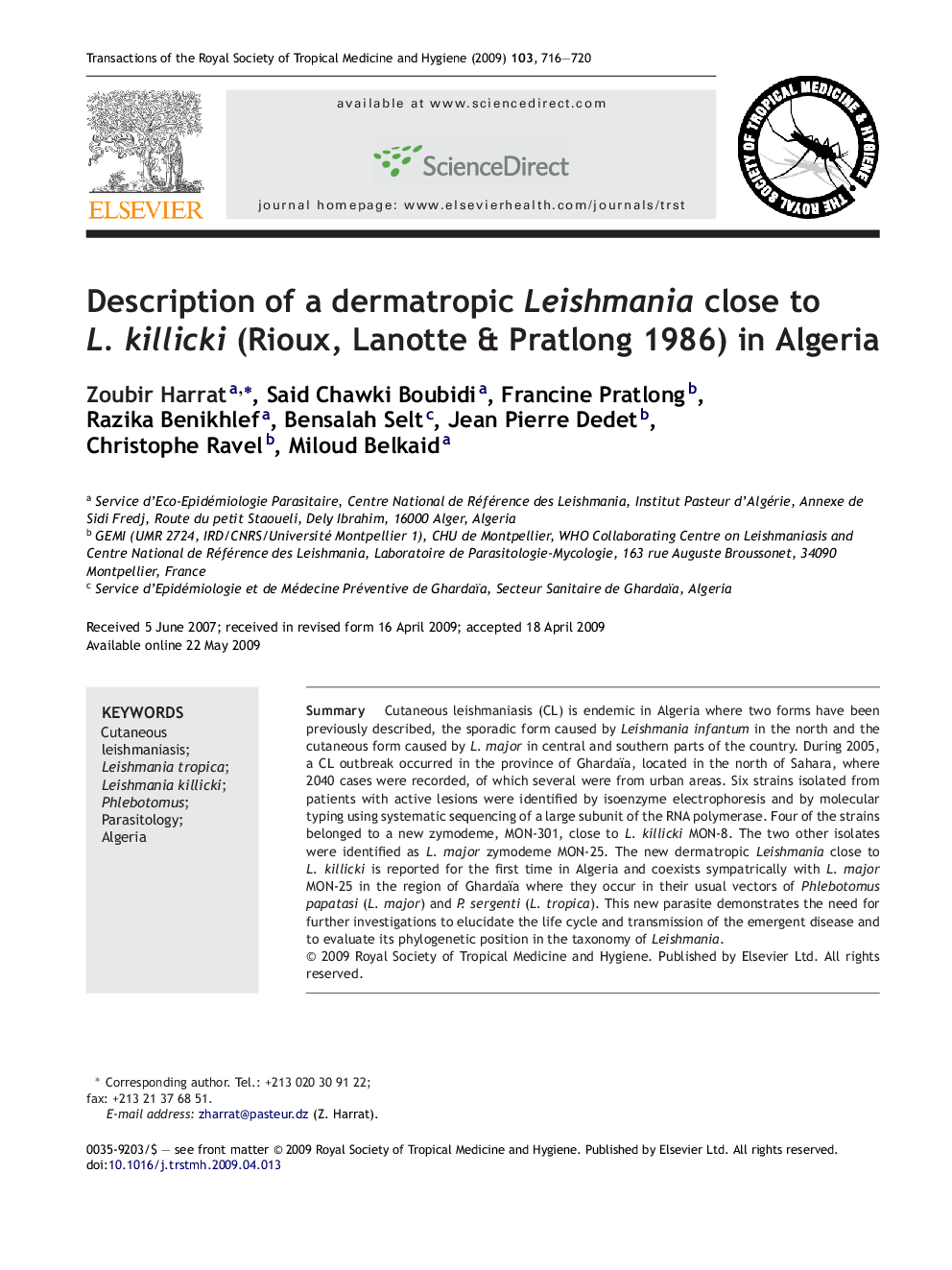| Article ID | Journal | Published Year | Pages | File Type |
|---|---|---|---|---|
| 6137369 | Transactions of the Royal Society of Tropical Medicine and Hygiene | 2009 | 5 Pages |
Abstract
Cutaneous leishmaniasis (CL) is endemic in Algeria where two forms have been previously described, the sporadic form caused by Leishmania infantum in the north and the cutaneous form caused by L. major in central and southern parts of the country. During 2005, a CL outbreak occurred in the province of Ghardaïa, located in the north of Sahara, where 2040 cases were recorded, of which several were from urban areas. Six strains isolated from patients with active lesions were identified by isoenzyme electrophoresis and by molecular typing using systematic sequencing of a large subunit of the RNA polymerase. Four of the strains belonged to a new zymodeme, MON-301, close to L. killicki MON-8. The two other isolates were identified as L. major zymodeme MON-25. The new dermatropic Leishmania close to L. killicki is reported for the first time in Algeria and coexists sympatrically with L. major MON-25 in the region of Ghardaïa where they occur in their usual vectors of Phlebotomus papatasi (L. major) and P. sergenti (L. tropica). This new parasite demonstrates the need for further investigations to elucidate the life cycle and transmission of the emergent disease and to evaluate its phylogenetic position in the taxonomy of Leishmania.
Related Topics
Life Sciences
Immunology and Microbiology
Applied Microbiology and Biotechnology
Authors
Zoubir Harrat, Said Chawki Boubidi, Francine Pratlong, Razika Benikhlef, Bensalah Selt, Jean Pierre Dedet, Christophe Ravel, Miloud Belkaid,
